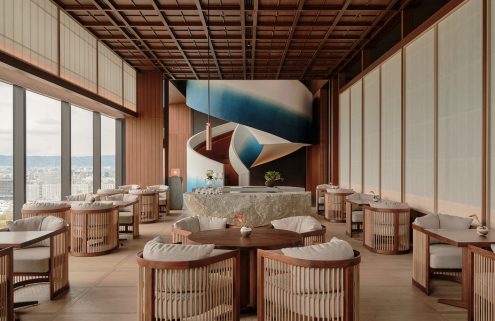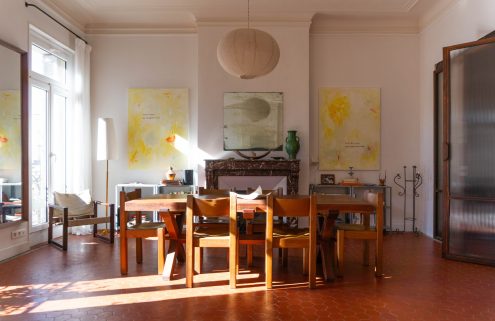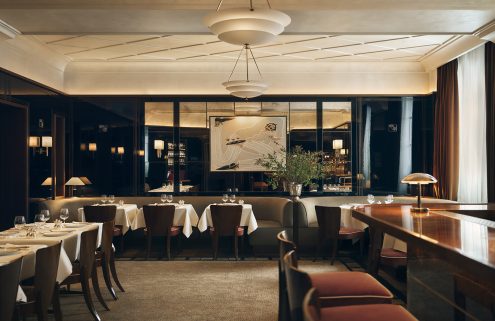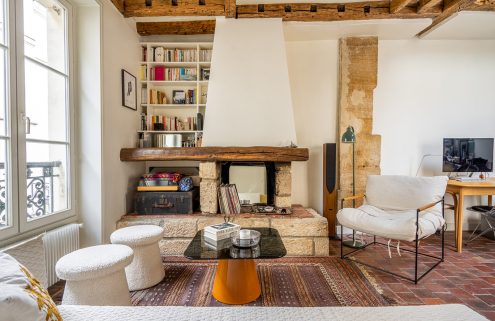Think of the Paris Métro and its art nouveau entrances immediately spring to mind. Their swirling, leafy shapes and accompanying lettering are evocative of the nostalgic charm and romance of the French capital city.
The cast-iron designs are highlighted in Blue Crow’s architectural guide to the city’s transit system alongside the Jules Verne-inspired platforms at Arts et Métiers, a mid-century ceramic mural and a variety of typefaces.
Take a whistle-stop tour of the best design and architectural sights on the Paris Métro.

Platforms at Arts et Métiers By François Schuiten, 1990sWith copper sheet lined walls, rivets, cogs and portholes, these platforms are styled like the interior of a steampunk submarine, which nods to its real-life subterranean setting. The playful 1990s design draws on the works of Jules Verne and the inventions featured at the Métiers industrial design museum. Photography: Nigel Green, © Blue Crow Media

Canopy at Les Halles at ChâteletBy Berger Anziutti and Patrick Berger, 2016The vast gently curving roof of this structure which rests on posts has the lightness of a piece of cloth. Spanning 270,000 square feet and featuring 18,000 glass shingles, the Canopy has echoes of the wrought iron Les Halles food market that used to stand on its site, and it sits above the enlarged Les Halles Métro station. Photography: Nigel Green, © Blue Crow Media

Entrance at Réaumur – Sébastopol By Hector Guimard, 1904 The Réaumur – Sébastopol entrance is the narrowest of all Guimard’s entry designs. The roof-less portal is both a work of art and a functional piece of street furniture, with its column-like lampposts created in the form of sinuous flower stems and heads featuring glowing orange bulbs. Photography: Nigel Green, © Blue Crow Media
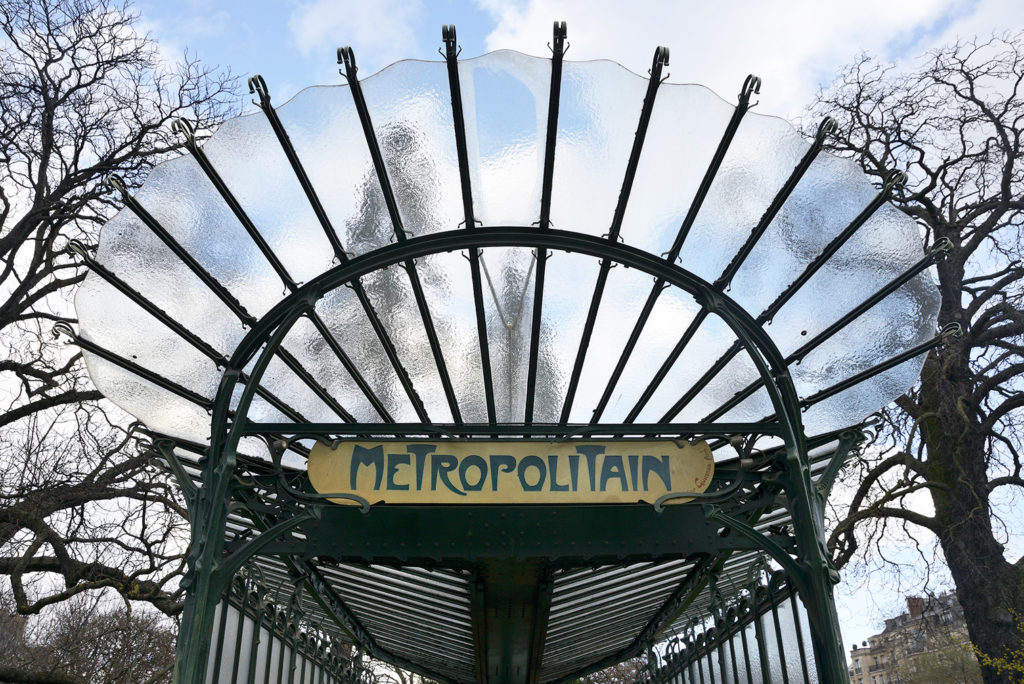
Art nouveau dragonfly entrance at Porte Dauphine By Hector Guimard, 1900This kiosk entrance is the only surviving example of three dragonfly roofed designs created by Hector Guimard, the art nouveau architect who was originally commissioned in 1899 to design the Métro station entrances. A fan-shaped opaque glass awning and floral motifs create a fantasy portal to the station. Photography: Nigel Green, © Blue Crow Media
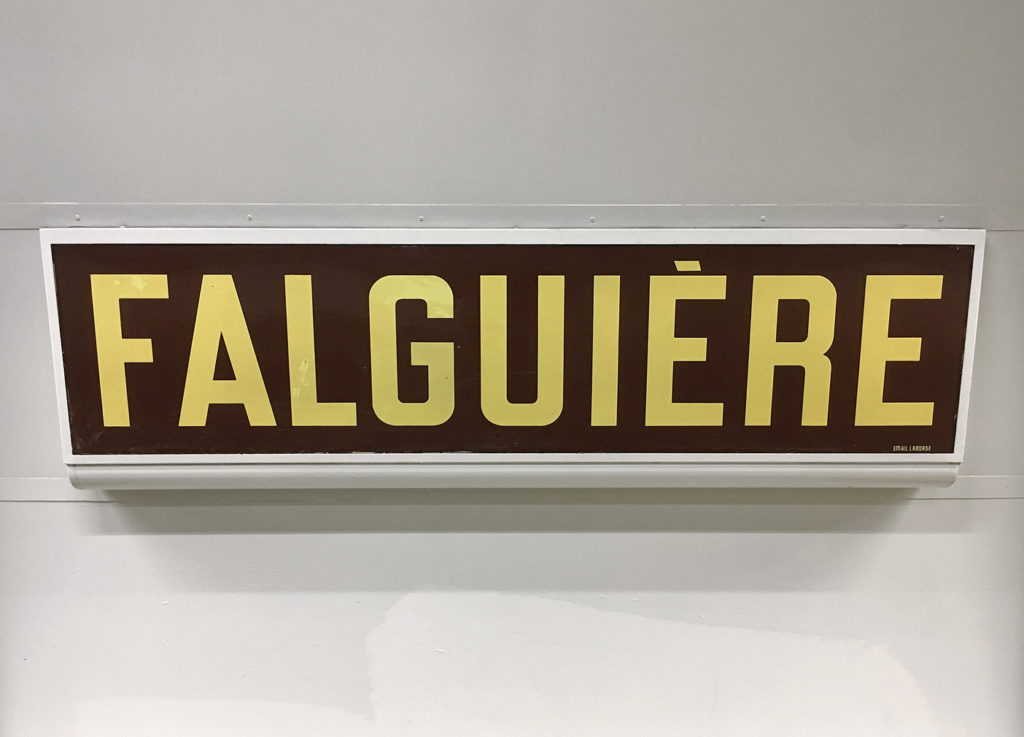
Signage at FalguièreBy RATP, 1960sThe first Métro signs were enamel coated and featured white writing against a dark-blue background. In the 1950s and 1960s the station tunnels were renovated with metal cladding known as carrossage and were given new signs with bright yellow uppercase letters on a dark brown background. Photography: Nigel Green, © Blue Crow Media
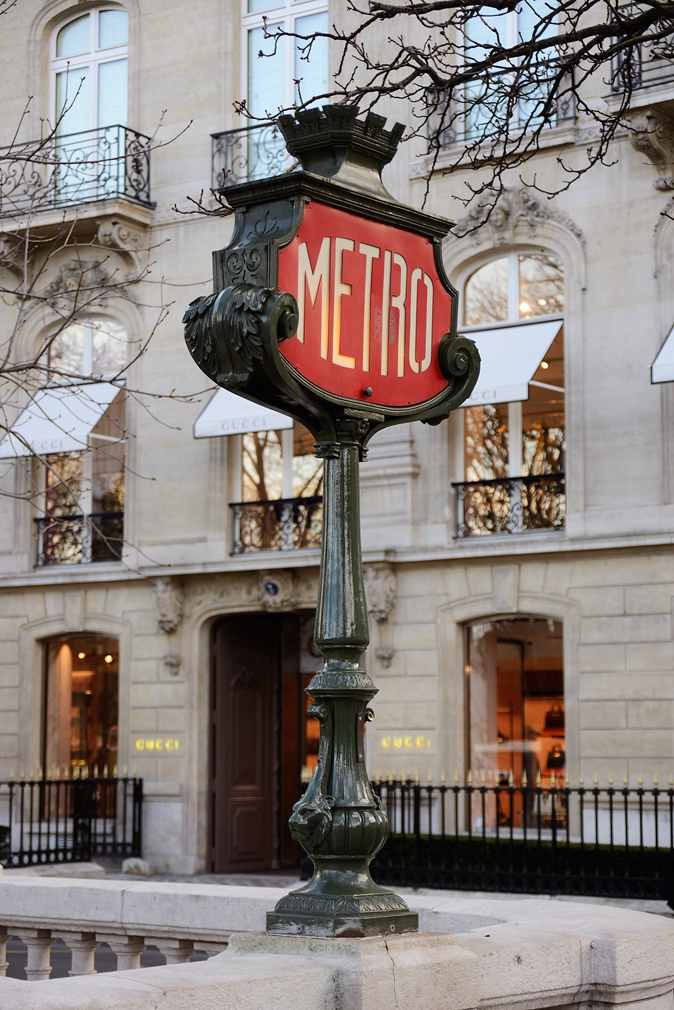
Signpost at Franklin D. Roosevelt Unknown, early 20th centuryThis signpost at Franklin D. Roosevelt, the only example of its kind, catches the eye with its sturdy, squat form and large red sign. The Metro sign is supported by green swirling curls with a relief leaf pattern on its sides and is topped with a square-like crown. Photography: Nigel Green, © Blue Crow Media

Azulejos at Champs-Elysées Clemenceau By Manuel Cargaleiro, 1995The wavy lines in this mural give it a sense of movement, mirroring the flow of foot traffic which passes alongside it. Made from azulejos tiles by Portuguese artist Manuel Cargaleiro, his primary-coloured work decorates the walls of the underground station that provides access to Paris’s most famous avenue. Photography: Nigel Green, © Blue Crow Media

Signage at Vaneau By CMP, 1923The striking red Metro hanging sign at Vaneau has a modern lettering but it still has the essence of the first Art Nouveau entryways, with its emerald iron work, decorative flourishes and orb-shaped light. Photography: Nigel Green, © Blue Crow Media

Blue Crow Media’s Paris Metro Architecture & Design Map is out now
is out now
